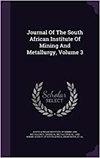覆岩和承压状态对洞室开采扩展的影响
IF 0.9
4区 材料科学
Q3 Materials Science
Journal of The South African Institute of Mining and Metallurgy
Pub Date : 2023-01-17
DOI:10.17159/2411-9717/1910/2022
引用次数: 0
摘要
采用物理建模方法模拟不同水平与垂直应力状态比下的溶洞开采扩展过程,采集图像数据并利用其表征破坏机制。图像处理集成到研究中,以确定模型中的小主应变,以确定相对于裂纹扩展超过临界拉伸应变的位置。该研究显示,使用计算的临界拉伸应变值为所用建模材料的0.014%,比例系数为119。在所有情况下,洞穴扩展都是通过连续平行的伸展“裂缝带”进行的,正如先前研究模型所注意到的那样,与Duplancic模型所描述的不同。裂缝倾向于平分小主应变等于临界拉伸应变的区域,这表明“断裂带”是脆性岩石类材料可接受的破坏模式。此外,水平与竖向应力比(K比)较低的模型(在相似的竖向应力下)崩落机制的垂直发展程度更大,而K比较高的模型的崩落机制的垂直程度受到抑制。在较大的垂直应力作用下,模型的溶洞形成较慢。这些模型分别显示出更大的二维洞穴周长和面积。本文章由计算机程序翻译,如有差异,请以英文原文为准。
The effect of overburden and confined stress state on cave mining propagation
A physical modelling approach was adopted to simulate the process of cave mining propagation at various horizontal to vertical stress state ratios, and image data was captured and used to characterize the resulting failure mechanisms. Image processing was integrated into the study to determine minor principal strains in models to identify where critical extensional strains had been exceeded relative to crack propagation. The study exhibited a scale factor magnitude of 119 using a calculated critical extensional strain value of 0.014% for the modelling material used. It was perceived that cave propagation occurred through successive parallel extensional 'fracture bands' in all cases, as noticed in models of prior studies, deviating from that described by the Duplancic model. Cracks tended to bisect regions of minor principal strain equal to the critical extensional strain, which suggests 'fracture banding' is an acceptable failure mode for brittle, rock-like materials. Moreover, it was found that models with lower horizontal to vertical stress ratios (K ratios) showed a greater degree of vertical development of the caving mechanism (at similar vertical stresses), while the vertical extent of the cave was suppressed in models with higher K ratios. Models subjected to larger vertical stresses experienced slower cave formation in latter time-steps. These models exhibited larger two-dimensional caved perimeters and areas, respectively.
求助全文
通过发布文献求助,成功后即可免费获取论文全文。
去求助
来源期刊
CiteScore
1.50
自引率
11.10%
发文量
61
审稿时长
4-8 weeks
期刊介绍:
The Journal serves as a medium for the publication of high quality scientific papers. This requires that the papers that are submitted for publication are properly and fairly refereed and edited. This process will maintain the high quality of the presentation of the paper and ensure that the technical content is in line with the accepted norms of scientific integrity.

 求助内容:
求助内容: 应助结果提醒方式:
应助结果提醒方式:


